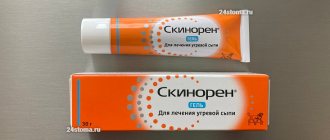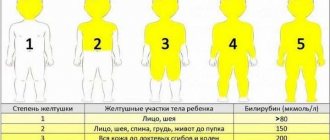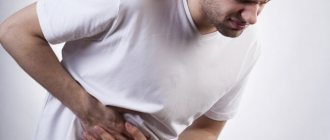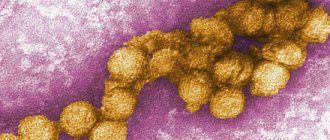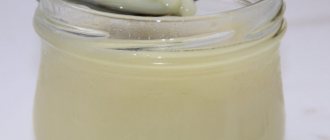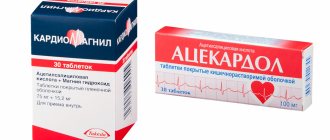Norm
Jaundice occurs due to disruption of bilirubin metabolism, its excretion and accumulation.
Bilirubin tends to form due to cytochromes, red blood cells and myoglobin, which have broken down.
Bilirubin comes in two forms:
- Incoherent. It is toxic, interacts with the protein albumin, and is transported to the liver area through the bloodstream;
- Connected. Cells that are in the liver area combine bilirubin and glucuronic acid, changing it into direct or conjugated bilirubin. Next, the liver produces bile, where bilirubin will be located, and it enters the intestines with it. Next, bilirubin is removed from the feces.
How to improve your skin tone?
There are standard recommendations that will help remove unhealthy complexion:
- you need to undergo a medical examination to determine possible diseases that could provoke this problem;
- carry out treatment that should be prescribed by a doctor;
- lead the right lifestyle, it should be active;
- Get enough sleep. This should be at least 6 hours per day;
- eat the right food - more fresh foods, less pickled, fried, fatty flour, drink clean water and plenty of it;
- exercise;
- walk in the fresh air, ventilate the room;
- do not use a lot of contraceptives, antibiotics;
- avoid stressful situations;
- try quitting smoking and drinking less.
These are the main activities that will help improve your skin tone and help your skin heal.
Types of jaundice
The following types of jaundice are distinguished according to their nature:
- Physiological. It occurs most often in children if their liver tissue is immature. Usually occurs in a large percentage of newborns on the third or fourth days of life. Usually occurs in premature babies. This is due to the fact that the body has not yet had time to adapt to the habitable environment. Jaundice itself can disappear in seven to twenty-one days, and does not harm the child’s body.
- Hemolytic. It occurs when red blood cells are destroyed. Hemoglobin, when released, turns into bilirubin. This effect may occur due to anemia and changes in the composition of hemoglobin protein. It happens that red blood cells are destroyed due to the influence of poisons and various drugs on them. During pregnancy, this type of jaundice occurs due to conflict between the child and the expectant mother.
- Parenchymal (or hepatic). This type of jaundice occurs due to inflammatory processes in the liver tissue due to hypoxia, autoimmune diseases, toxins and hepatitis viruses, which are divided into A, B, C, D, E, F, G.
- Mechanical. This jaundice occurs due to disturbances in the bile flow from the liver to the duodenum. This jaundice can appear due to: stones in the ducts, inflammatory processes, narrowing of the ducts (the disease is dangerous due to complications), neoplasia of the pancreas and liver, roundworms and helminths in the gastrointestinal tract, due to which the bile ducts can be blocked and anemia develops.
Another classification of jaundice is based on its duration:
- Acute jaundice. Rapid simultaneous onset of symptoms;
- Chronic jaundice. Symptoms appear gradually, the speed of their manifestation is associated with the course of the disease that caused jaundice.
Grey
See a doctor urgently!
Dull, grayish skin is a sign of thickening of the outer (horny) layer of the epidermis. In medicine, this condition is called hyperkeratosis. This problem can be caused by various skin diseases (ichthyosis, keratoderma, etc.) and internal diseases - diseases of the gastrointestinal tract, metabolic disorders in diabetes mellitus. This condition can also develop with hypovitaminosis, especially with a lack of vitamin A.
Or to a cosmetologist?
Exposure to aggressive factors on the skin - strong wind, frost, direct sunlight - can also give the skin a dull hue. In addition, a grayish complexion can be caused by improper skin care and stress. A cosmetologist's solution to this problem is aimed at normalizing home skin care - serums that even out skin texture, scrubs and exfoliating masks, as well as surface peelings, including enzyme peeling, hydropeeling, and carbon peeling will be used.
Winter is not suitable. How to cope with seasonal appearance problems Read more
What you need to know
Yellow skin color also occurs due to carotene oversaturation. This happens if a person often eats vegetables and fruits that contain it in large quantities.
How to distinguish such yellowing from jaundice? With it, only the skin is stained, but not the mucous membranes.
It happens that the skin turns yellow due to taking medications containing acryquine or picric acid.
Further, the skin turns yellow. If you consume excessive amounts of spices, spicy foods, fast for a long time, or frequently use alcohol or drugs.
Yellow
See a doctor urgently!
The appearance of a jaundiced tint to the skin is an alarming symptom that may indicate various problems with the liver and gall bladder, parasitic and infectious diseases. In this case, the entire skin acquires a yellowish tint; The mucous membranes of the mouth and the whites of the eyes may also turn yellow.
But the appearance of icteric plaques on the skin - xanthoma - is a symptom of a lipid metabolism disorder. In this case, you need to take tests to determine lipid and cholesterol levels. The xanthomas themselves can be removed - laser removal is preferred. Coloring the skin yellow is also possible when consuming a large amount of foods rich in carotene: carrots, pumpkin, etc. In this case, eliminating them from the diet will lead to a rapid improvement in the condition of the skin. In addition, a pale yellow skin tone is characteristic of smokers.
Or to a cosmetologist?
With age, lipofuscin, an “aging pigment,” begins to be deposited in the skin, which gives it a yellowish tint. In this case, various external and injectable preparations with vitamin C are well suited. And you can whiten age spots using lasers and peelings.
Cancer, jaundice, excess cholesterol. What health problems do the eyes reveal? Read more
Diagnostics
To identify jaundice and determine what kind of disease a person has, you need to carry out the following diagnostics:
- CBC, where hemoglobin is determined;
- Blood biochemistry, which shows total bilirubin and its secretions;
- Lipid profile study;
- Test for thyroid hormones;
- Testing for tumor markers;
- Test for roundworms;
- TAM, which determines the level of bilirubin and its secretions;
- Immunological analysis to detect antibodies to viral hepatitis;
- PCR research;
- Antiglobulin test (for newborns);
- Fibrogastroduodenoscopy, which shows inflammation, neoplasia and bile duct stones.
Dyspnea
Diagnostic procedures for each patient are selected individually by the doctor.
Red
See a doctor urgently!
Redness of the face can be either an independent disease - rosacea (it is characterized not only by redness, but also by a rush of blood to the face), or a symptom of various internal problems: arterial hypertension, diseases of the gastrointestinal tract, in particular the liver, infectious diseases. In addition, redness can develop as an allergic reaction. In this case, you must first eliminate the allergen, and then treat the skin with anti-inflammatory drugs, and, according to indications, prescribe hyposensitizing therapy.
Or to a cosmetologist?
If your face turns red periodically, it is necessary to choose care aimed at protecting the skin from aggressive factors. These are usually products for sensitive skin. Also in the arsenal of cosmetologists there are injectable drugs that reduce vascular reactivity - mesobotox; mesotherapy and biorevitalizing preparations that restore and protect the skin.
Sallow complexion and acne. 8 signs that it’s time for you to see a doctor Read more
Main aspects of treatment
When the causes of the disease, jaundice, are detected, treatment is prescribed taking into account the type of pathological processes. Therapy is complex and consists of:
- drug treatment;
- physiotherapeutic activities;
- the patient's diet.
In difficult cases, when it is necessary to ensure the removal of bile masses, the patient is indicated for surgical intervention to remove tumors or formed stones. It is possible to remove the gallbladder. If the patient has an adrenal form of the disease, treatment for anemia is required. If complications occur, the patient is given a blood transfusion. If jaundice is infectious, treatment is carried out exclusively in a hospital setting. It is not recommended to self-medicate according to popular advice. Without qualified medical support, this is dangerous to health.
Answers to the most frequently asked questions
How is jaundice transmitted?
Jaundice is not transmitted from person to person if the cause of its development is functional disorders and internal pathologies of organs. If the disease is infectious in nature, you can become infected through the oral-fecal route. It is recommended to wash your hands frequently, not to drink raw tap water, and not to use the services of dubious dental clinics or beauty salons.
How to treat jaundice?
In most cases, the disease is a manifestation of pathological disorders in the body. Treatment depends on the form of the disease. Comprehensive therapy is prescribed with a study of the root cause of jaundice.
Is jaundice contagious in adults?
The disease is contagious only if it is hepatitis in nature. With functional disorders of the liver and biliary tract, jaundice in adults is not contagious.
When to see a doctor
When yellowing of the skin appears, first of all you need to listen to the general condition of the body. If no symptoms are observed, perhaps the cause lies in poor diet and digestive problems. If skin pigmentation does not subside within several days, a person should consult a therapist.
The doctor will conduct an initial diagnosis, during which a further treatment plan will be prescribed.
When to see a doctor
Depending on the disease, the patient will need the help of doctors of a more narrow specialization:
- gastroenterologist;
- infectious disease specialist;
- hematologist;
- endocrinologist.
Information about the diagnosis and treatment of the disease
Diagnosis of jaundice consists of determining the causes of its occurrence. After a visual examination, the doctor prescribes a series of studies to study the pathogenesis and diagnosis:
- study of viral hepatitis markers;
- biochemical and general blood test;
- Ultrasound of the abdominal organs;
- MRI;
- duodenal intubation;
- liver biopsy.
